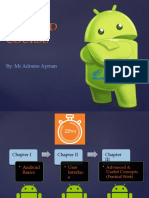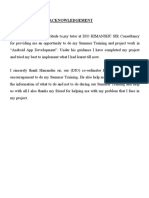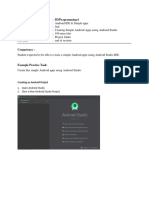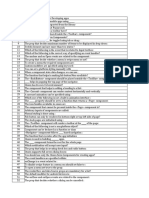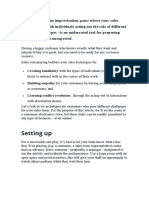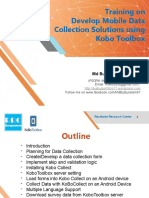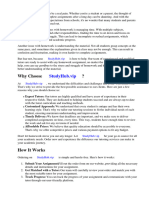0% found this document useful (0 votes)
21 views23 pages1-Android Introduction
- Android is a mobile operating system maintained by Google that runs on phones, tablets, watches and more. It is based on Java and Linux and has over 1 million apps.
- Developing for Android allows for a better user experience compared to mobile web apps by using device hardware and widgets. It has a larger install base than iOS and free development tools.
- The Android architecture provides libraries for system features like contacts, camera etc. Apps are compiled to Dalvik binary format and run on virtual devices or real devices.
Uploaded by
kim moon lightCopyright
© © All Rights Reserved
We take content rights seriously. If you suspect this is your content, claim it here.
Available Formats
Download as PDF, TXT or read online on Scribd
0% found this document useful (0 votes)
21 views23 pages1-Android Introduction
- Android is a mobile operating system maintained by Google that runs on phones, tablets, watches and more. It is based on Java and Linux and has over 1 million apps.
- Developing for Android allows for a better user experience compared to mobile web apps by using device hardware and widgets. It has a larger install base than iOS and free development tools.
- The Android architecture provides libraries for system features like contacts, camera etc. Apps are compiled to Dalvik binary format and run on virtual devices or real devices.
Uploaded by
kim moon lightCopyright
© © All Rights Reserved
We take content rights seriously. If you suspect this is your content, claim it here.
Available Formats
Download as PDF, TXT or read online on Scribd
/ 23









